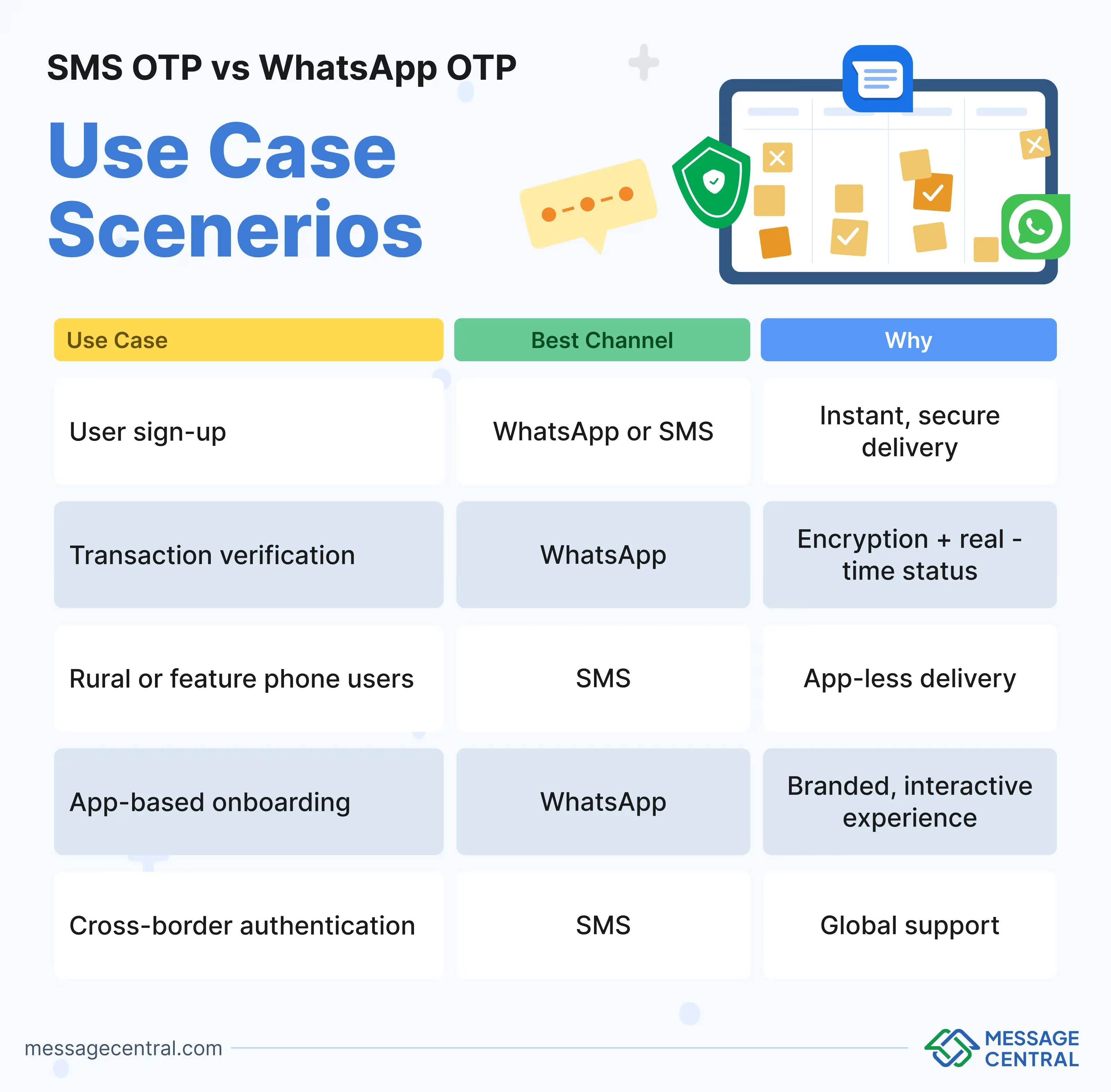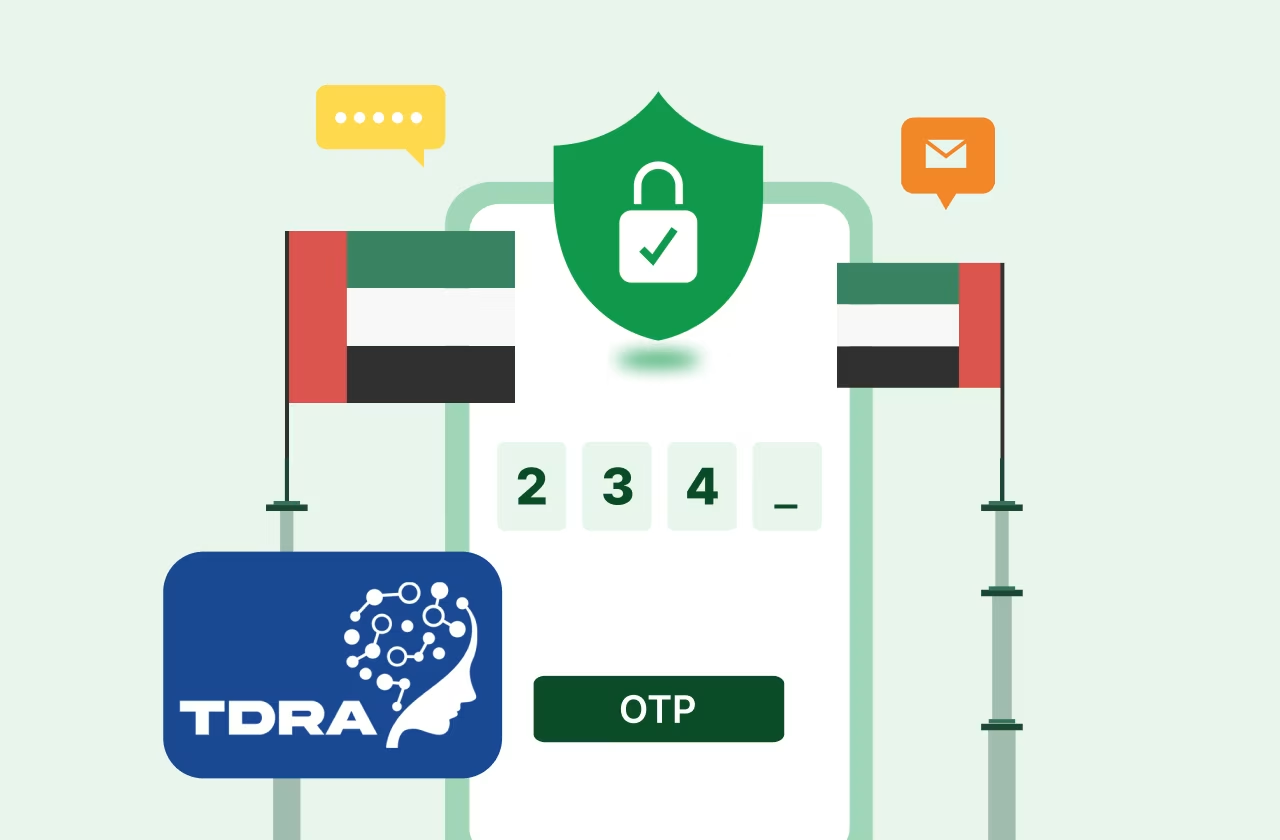Key Takeways
Why Your OTP Delivery Strategy Needs an Upgrade
In today’s hyper-connected world, users expect instant, seamless access to their digital lives. Whether it’s logging into a banking app, authorizing a payment, or resetting a password, one-time passwords (OTPs) are the gatekeepers of digital trust. But here’s the hard truth: if your OTP doesn’t reach the user or if it’s delayed, your business risks drop-offs, user frustration, and ultimately, customer churn.
A 2023 Vonage study found that 67% of users will abandon a transaction if the OTP doesn’t arrive in under 30 seconds. That’s a staggering number, and it underscores a critical question: not “Do I need OTPs?” but “Which channel should I use—SMS OTP or WhatsApp OTP—to guarantee delivery and security?”
In this comprehensive guide, we’ll break down the pros, cons, and best practices for both SMS OTP and WhatsApp OTP. We’ll help you choose the right fit for your business, boost your authentication success rates, and deliver a frictionless user experience.
Ready to try both channels with built-in fallback? Send your first 1,000 OTPs free with Message Central
What Is an OTP and Why Does Channel Choice Matter?
An OTP (One-Time Password) is a unique, temporary code generated for a single login session or transaction. It’s a cornerstone of multi-factor authentication (MFA) and is widely used to protect user accounts, financial transactions, password resets, and other sensitive actions. OTPs significantly reduce the risk of unauthorized access by ensuring that even if a password is compromised, access cannot be gained without the OTP.
But here’s what many businesses overlook — how the OTP is delivered can make or break the user experience.
If an OTP arrives late, is filtered out, or never reaches the user, the result is immediate:
- User drop-off during signup
- Abandoned logins or checkouts
- Lost conversions and revenue
- Frustration that damages trust in your product
In fact, studies show that over 35% of users abandon sign-up processes if OTPs aren’t delivered within 30 seconds (Statista).
Each channel you use to send OTPs — whether it’s SMS or WhatsApp — comes with its own advantages and limitations in terms of deliverability, global reach, costs etc. When a channel fails, your user is stuck, and your brand takes the hit. That’s why understanding the differences between SMS OTP and WhatsApp OTP isn’t just a technical choice — it’s a strategic one.
Let’s take a closer look at the two dominant OTP channels used by businesses globally.
Channel #1: SMS OTP (The Reliable Workhorse)
Benefits of SMS OTP-
- Global Reach: Works on any mobile device with a SIM card—no smartphone or app required.
- Universal Accessibility: Penetrates remote regions and supports offline scenarios.
- Standardized Delivery: Supported by all telecom providers worldwide.
- Instant Delivery: SMS OTPs are typically delivered in 5–7 seconds, with a 94–98% success rate post-compliance
Challenges with SMS OTP-
- Vulnerability to Spam Filters: Especially in the U.S. (10DLC) and India (DLT), aggressive carrier filters can block or delay OTP delivery46.
- No Encryption: Unlike WhatsApp, SMS lacks end-to-end encryption.
Real Use Case-
Most banks and fintech apps default to SMS OTPs for universal accessibility. In India, after the introduction of DLT registration, platforms like Paytm saw a 16% drop in OTP delivery until compliance measures were fully in place.
Key Stats-
- Reach: 190+ countries
- Delivery Speed: 5–7 seconds
- Success Rate: 94–98% (post-compliance)
- Cost: $0.003 to $0.01 per OTP
Send your first 1,000 SMS OTPs free
Channel #2: WhatsApp OTP (Modern, Secure, and User-First)
Benefits of WhatsApp OTP
- Rich User Experience: Branded messages, logos, timestamps, buttons, and personalization enhance trust and engagement235.
- Read Receipts: Know exactly when your OTP is delivered and read.
- Lower Spam Risk: WhatsApp messages are less likely to be filtered or blocked compared to SMS
Challenges with WhatsApp OTP
- Message Window Restrictions: WhatsApp enforces a 24-hour messaging window for business-initiated messages.
- Not Universal: Not all users, especially in rural or older demographics, use WhatsApp.
Real Use Case
In Brazil, ride-hailing service 99 (DiDi Chuxing) switched OTP delivery from SMS to WhatsApp for urban users. Result? OTP delivery rate improved by 6%, and support tickets for “OTP not received” dropped by 34%.
Key Stats:
- Reach: 2.8 billion users (with opt-in)
- Delivery Speed: 2–4 seconds
- Success Rate: 99.5%+
- Cost: $0.004 to $0.02 per OTP
SMS OTP vs WhatsApp OTP
Implementation:
- SMS: Simple API, but compliance paperwork can delay go-live
- WhatsApp: Slightly more complex, but faster delivery once set up
Maintenance:
- SMS: Monitor for DLT/10DLC rejections
- WhatsApp: Template approvals handled by API partners like Message Central
Use Case Scenarios

Why Not Both? Best-of-Both Delivery with VerifyNow
Can’t decide? You don’t have to.
Message Central’s VerifyNow API delivers OTP via SMS first. If the OTP fails (due to delay, filtering, or network issues), it automatically reroutes the same OTP to WhatsApp — instantly, to the same number.
Benefits:
- 99.9% guaranteed OTP delivery
- No dev overhead — fallback is built-in
- Pre-approved templates (SMS + WhatsApp)
Send 1,000 OTPs free with in-built WhatsApp fallback
Final Verdict: SMS OTP vs WhatsApp OTP
Choose SMS OTP if:
- Your users span across urban and rural areas
- You want global coverage with minimum setup
Choose WhatsApp OTP if:
- Your users already use WhatsApp
- You need delivery insights, rich branding, and better success rates
Use both with fallback if:
- You want zero OTP failures, ever
- You care about both conversion rates and user trust
Frequently Asked Questions (FAQs)
Q1: Can I use WhatsApp OTP without user opt-in? No, WhatsApp requires user consent before messaging begins.
Q2: What happens if an SMS OTP fails to deliver? With VerifyNow, the same OTP is instantly sent via WhatsApp as a fallback.
Q3: Is WhatsApp more secure than SMS for OTP? Yes, WhatsApp offers end-to-end encryption while SMS does not.
Q4: Can I use both channels for one user journey? Yes. Message Central's API is built to handle multi-channel flows seamlessly.
Q5: How do I get started? Create a free account and send your first 1,000 OTPs today










